Understanding when to repair or replace your shoes can be more significant than it seems at first glance. This decision doesn’t just affect your wallet but also impacts the environment and the longevity of your beloved footwear. In this guide, we’ll dive into the world of shoe maintenance, exploring the benefits of shoe repairs and the signs that indicate it’s time to retire your worn-out shoes. Now let’s get started on when to repair vs replace.
Introduction
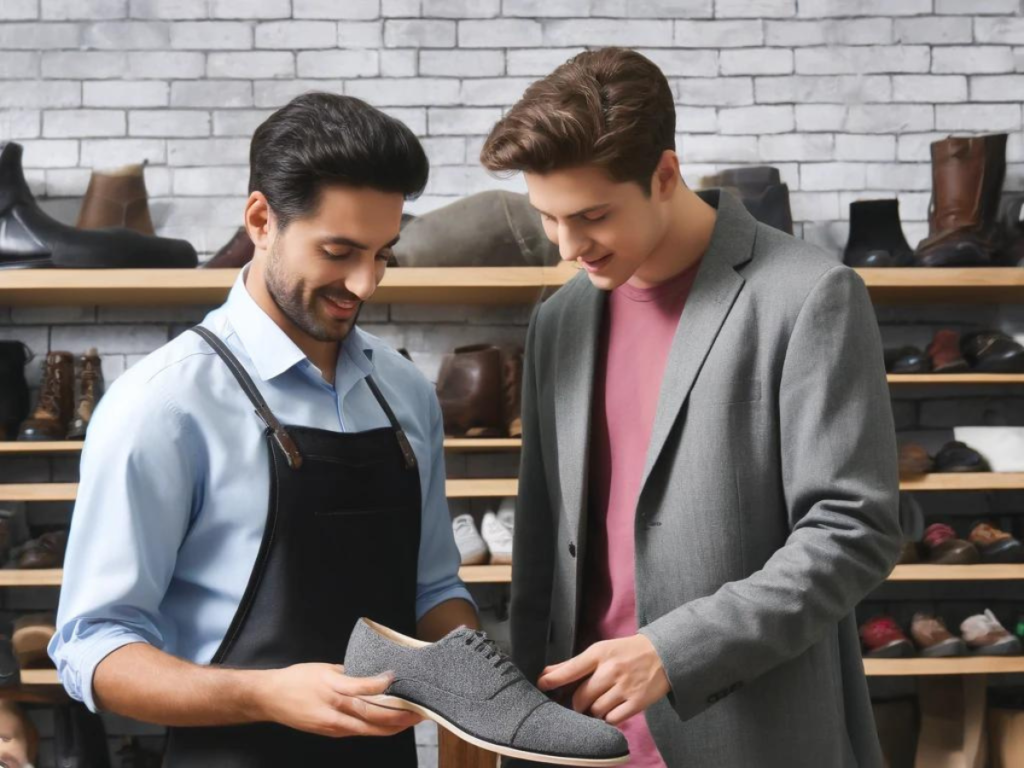
Welcome to the crossroads of practicality and responsibility: Shoe Repair vs. Replace. In the lifespan of your favourite footwear, there comes a pivotal moment when you must decide whether to breathe new life into them through repair or whether it’s time for a shopping spree. This isn’t just a question of saving a few bucks or holding onto comfortable shoes—it’s a heavier debate, laden with environmental implications and cost-efficiency considerations.
In an age where every purchase and every discarded item can tip the scales of sustainability, understanding the dynamics of shoe repair versus replacement becomes crucial. It’s not only about making cost-effective choices but also about contributing less to the piles of waste the footwear industry is known for. As we tread this path, let’s dissect what makes shoe maintenance a worthy choice for your wallet, your comfort, and the planet.
The Footwear Dilemma: Repairing vs. Replacing
When we talk about shoes, we’re tapping into a global phenomenon. Statista reports that the footwear industry is massively expansive, booming into billions of dollars worldwide. Meanwhile, the Ellen MacArthur Foundation highlights an issue that often walks hand in hand with this growth: significant waste. Millions of shoes end up in landfills each year, partially due to the modern quick-to-discard consumer culture.
However, there’s a more sustainable path that not only benefits the planet but also respects your wallet. This route leads through the doors of professional shoe repair services like those offered at Shoewash Supreme. Visit our guide for tips when looking for a cobbler.
Taking your shoes to a professional for repair can dramatically extend their lifespan. It’s not just about stitching up a torn seam or replacing a worn-down sole; it’s about preserving the craftsmanship and quality that your shoes began their life with. For many, this means holding onto comfortable, well-fitted shoes that they love, and for the environment, it means one less pair heading to the dump. Thus, embracing shoe repair is a forward step in both preserving your personal style and promoting an environmentally conscious stance.
In essence, opting for repair over replacement isn’t just a personal finance tip. It’s a choice with wider implications, echoing across your closet and the planet.
Repair: When and Why?
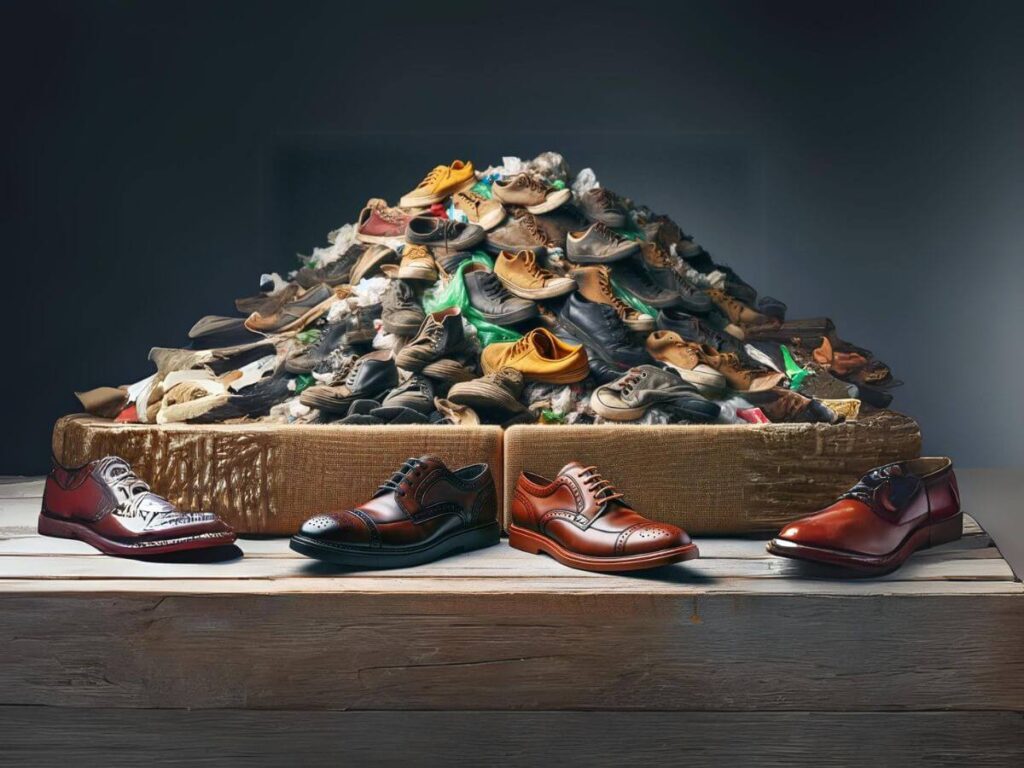
When confronted with a pair of worn-out kicks, the question isn’t merely whether to repair or replace, but why choose one over the other? Here’s a breakdown that could help you make a more informed decision, keeping your wallet and Earth in mind.
Financial Benefits
- Cost Considerations: Typically, repairing shoes can greatly reduce expenditures compared to purchasing new ones. For example, replacing a worn sole or fixing a zipper might cost between $20 to $50, whereas a new pair of good quality shoes can easily range from $100 to $300 or more. This represents significant savings, as highlighted in financial reports by NBC News.
- Long-term Savings: Over time, these savings can accumulate, allowing you to allocate funds elsewhere in your budget. Additionally, you might even invest in higher-quality shoes in the future that could last even longer.
Environmental Benefits
- Waste Reduction: Repairing shoes means less footwear ends up in landfills, crucial for reducing waste.
- Conservation of Resources: Decreased demand for new shoes means fewer resources are necessary for their production. This assists in conserving precious materials and reduces carbon emissions associated with production and distribution.
- Sustainability: As noted by the Ellen MacArthur Foundation, fostering an economy where items are used longer drastically cuts down on waste and nurtures sustainability.
Fashion Benefits
- Aesthetic Preservation: Maintaining the original flair of your cherished shoes retains style and emotion that new shoes might lack.
- Comfort and Fit: Often, new shoes require a break-in period to reach the comfort level of a pair they replace; a step you can skip by fixing the old favorites.
- Vintage Appeal: Publications like The Guardian underline the growing appreciation of vintage and classic styles, which repair can maintain.
In conclusion, whether it’s saving dollars, reducing environmental impact, or holding onto those beloved shoes a bit longer, repairing your shoes offers benefits that are worth considering before heading to the store for a new pair.
When to Replace Shoes
Knowing when to call it quits on your favorite pair of shoes can sometimes feel like a guessing game. But, there are a few clear signs and practical considerations that can help make this decision a bit easier. Here, we’ll break it down so you can do what’s best for your feet and your budget.
Firstly, irreparable damage is a straightforward indicator that it’s time to replace your shoes. If your shoes have severe structural damages like cracked soles, broken heels, or extensive upper damage that cannot be stitched or glued effectively, then a replacement is your go-to option. At times, the cost of repairs might also exceed the value or replacement cost of the shoes. If fixing your shoes costs more than a new pair, it’s probably time to start shopping.
Style obsolescence is another consideration. Fashion evolves, and so does our personal style. If your shoes feel outdated and don’t compliment your current aesthetic, replacing them might give you a boost in confidence and style. Similarly, issues with fit—perhaps the shoes never fit quite right or they’ve become uncomfortable over time—are also valid reasons for replacement. Ill-fitting shoes can lead to discomfort and foot problems, making it wiser to opt for a new pair that suits your foot shape and walking style better.
Keep these pointers in mind the next time you’re weighing whether to repair or replace. Your choice can affect not just your wardrobe’s functionality but also your overall comfort and foot health. For more tips, check out our article on when to repair hiking boots.
Challenges to Shoe Repair
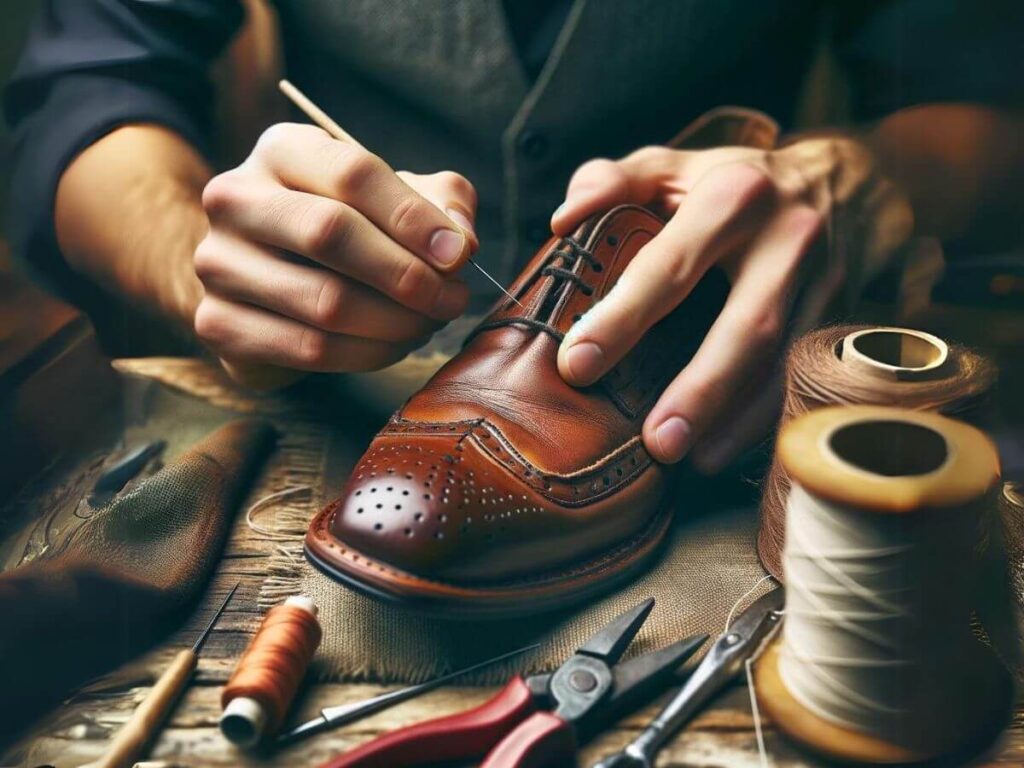
Despite the apparent benefits, navigating the world of routine shoe maintenance isn’t always straightforward. There are several key challenges that both consumers and industry professionals face.
Accessibility of Repair Services
One of the main hurdles that many shoe owners encounter is the dwindling number of professional shoe repair shops. As highlighted by The New York Times, certain regions, especially rural and suburban areas, often lack adequate access to skilled cobblers. This scarcity can deter individuals from seeking repair services simply because they aren’t readily available or conveniently located.
Consumer Knowledge Gap
Moreover, even when the services are accessible, there exists a significant gap in consumer knowledge. Many shoe owners are unaware of what can be fixed and at what cost. The Washington Post points out a common consumer perception that shoe repair is more of a hassle than it’s worth, especially when compared with the ease of buying new footwear online with just a few clicks.
Strategies for Overcoming Challenges
To tackle these challenges, there needs to be a concerted effort toward increasing awareness about the benefits and possibilities of shoe repair. Potential strategies include:
- Educational Campaigns: These campaigns could detail what services a cobbler can offer and the potential savings compared to buying new shoes.
- Simplifying Access: Initiatives like mobile repair services or drop-off points at popular retail centers could serve as innovative solutions to make shoe repair more mainstream and convenient.
Conclusion
In summary, while the path to revitalizing the shoe repair industry may have its challenges, the potential benefits in terms of cost savings, environmental impact, and maintaining personal style are immense. Understanding and navigating these hurdles is crucial for both consumers and businesses in the industry. By addressing these obstacles, we can pave the way for a resurgence in the appreciation and utilization of shoe repair services, ultimately contributing to environmental sustainability and fashion longevity.
Future of Shoe Repair Industry
The shoe repair industry is positioned for notable growth, reflecting an increased consumer commitment to sustainable fashion practices. Analysts from the Business of Fashion suggest that as the public becomes more environmentally conscious, the desire to extend the life of footwear through repairs rather than replacements will see an upward trend. This shift is not just a fleeting fashion whim but part of a broader move towards sustainability in the fashion industry at large.
Further fueling this growth is the projected improvement in service accessibility. According to recent studies by IbisWorld and evaluations in The Economist, advancements in technology and the rise of online platforms are set to make shoe repair services more accessible than ever. This includes the emergence of mail-in repair services, mobile repair units, and even enhanced local drop-off points which integrate smoothly with busy consumer lifestyles.
These developments are essential in an industry that must evolve to meet consumer needs and environmental standards simultaneously. As service accessibility increases, it is anticipated that more consumers will choose to repair rather than replace, contributing not only to the growth of the shoe repair industry but also promoting greater sustainability within the fashion sector.
Tips for Maintaining Your Shoes
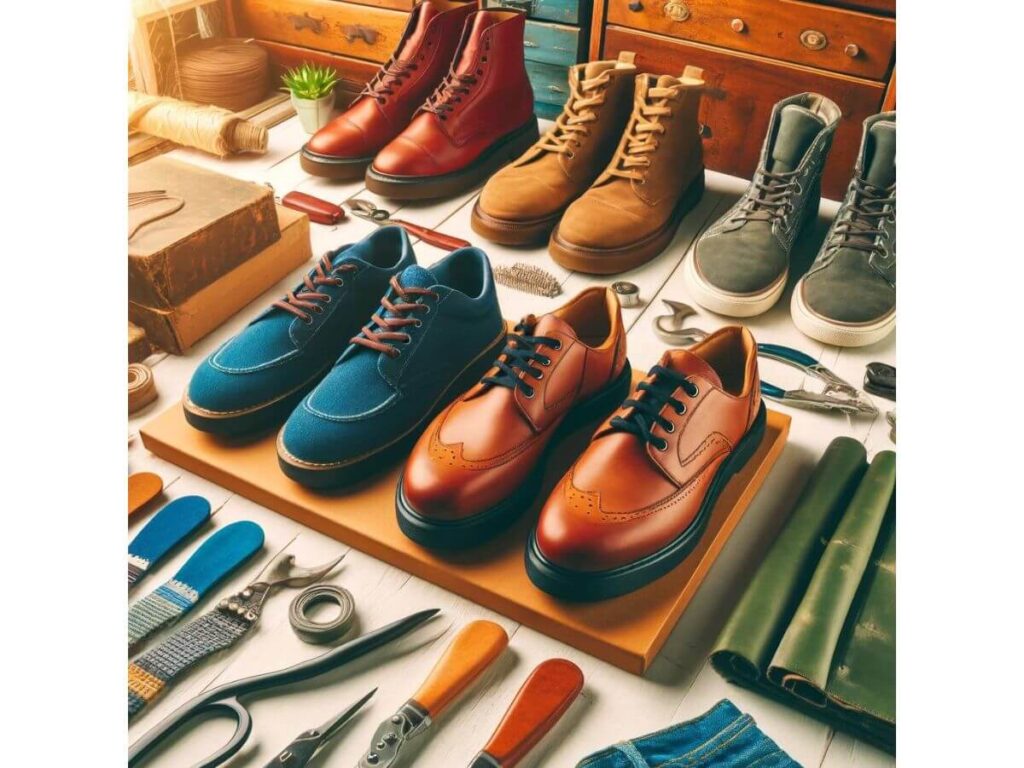
Maintaining your shoes well isn’t just about keeping them looking good, it’s about stretching each dollar and making a positive nod towards the environment. Starting with some straightforward care routines can drastically cut down on your visits to the shoe repair shop and keep your favorite pairs in action longer. Here are a few solid tips worth lacing up for:
Proper Cleaning
First off, knowing how to properly clean your shoes is crucial. Don’t wait for dirt and grime to build up. For sneakers, a gentle scrub with a mixture of warm water and mild detergent can do the trick. Leather shoes, on the other hand, demand a bit more finesse with specialized cleaners and conditioners to prevent cracking and drying out. Always remove laces and insoles and clean them separately to ensure every nook and cranny gets attention.
Smart Storage
Where you stash your shoes can have a surprisingly big impact. Avoid damp, poorly ventilated areas as these environments invite mold and mildew. Instead, store your shoes in a cool, dry place. Using shoe trees for dress shoes or simply stuffing your casual shoes with newspaper can help maintain shape and absorb any lingering moisture, which is a big plus.
Routine Maintenance
Routine checks can catch small issues before they turn into big problems. Regularly inspect your shoes for signs of wear and tear like loose threads, worn-down soles, or detached soles. Address these issues promptly by visiting professionals like those at Shoewash Supreme who can extend the life of your footwear with expert care.
By adopting these simple yet effective practices, not only do you boost the longevity of your shoes, but you also contribute to a more sustainable lifestyle. Remember, every shoe treated with a little TLC repays you with extended life and sustained comfort, walking you through many more adventures.
Conclusion
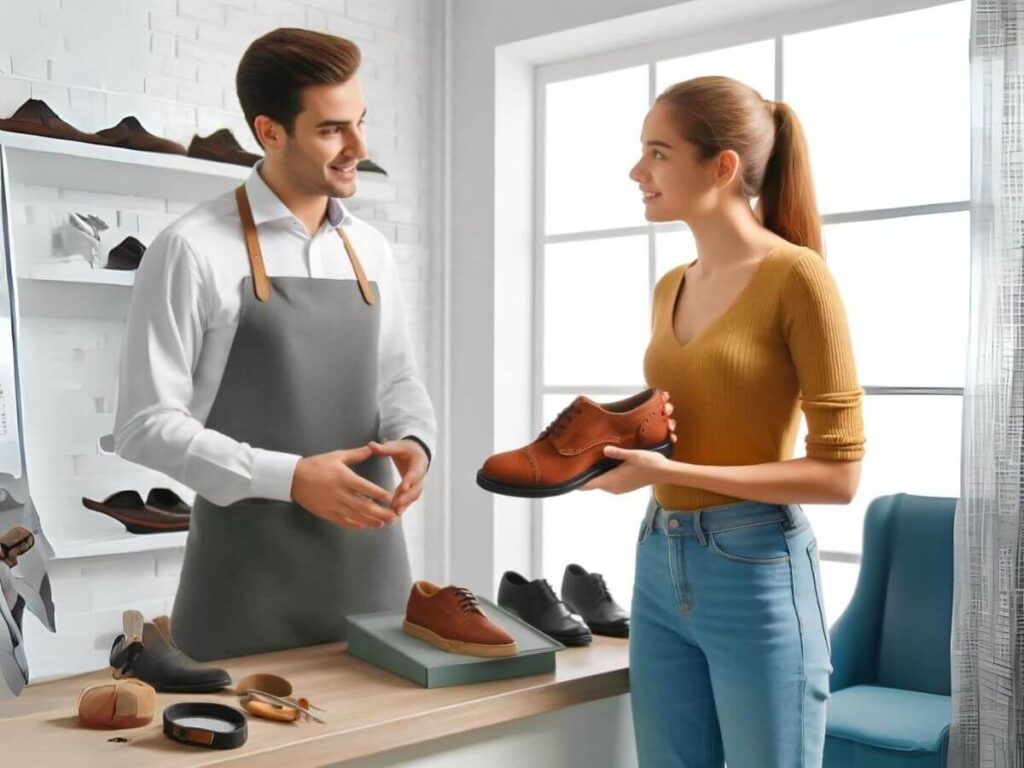
Alright, let’s wrap up what we’ve strolled through today. Choosing to repair your shoes rather than replacing them isn’t just a penny-wise move—it’s a strategic play towards sustainable living. By opting for repairs, you’re not only keeping your favorite kicks in play but also contributing to less waste and, ultimately, a lighter environmental footprint. It’s like giving the planet a high-five with your newly spiffed-up shoes.
But remember, it’s not just about economic smarts or eco-friendliness—this choice underscores your role in a bigger global fashion narrative where every repaired shoe is a step against the throwaway culture. Every time you choose repair over replacement, you’re voting for a world that values sustainability, craftsmanship, and longevity in the things we wear.
Feeling inspired to keep your shoes in tip-top shape for the long haul? Check out local shoe repair spots like Shoewash Supreme or dive into resources like Squawkfox to learn more about maintaining and repairing your trusty threads. Those cobblers and craftsmen are wizards, turning what you thought might be trash back into your treasured togs.
In short, the next time you’re on the fence about whether to repair or replace, lean into repair. Not only will your wallet thank you, but the earth will too. Let’s put our best foot forward together in promoting more sustainable fashion choices—one shoe at a time. Thanks for reading our guide on Shoe repair 101: when to repair vs replace.
Tags: shoe repair, shoewash supreme





